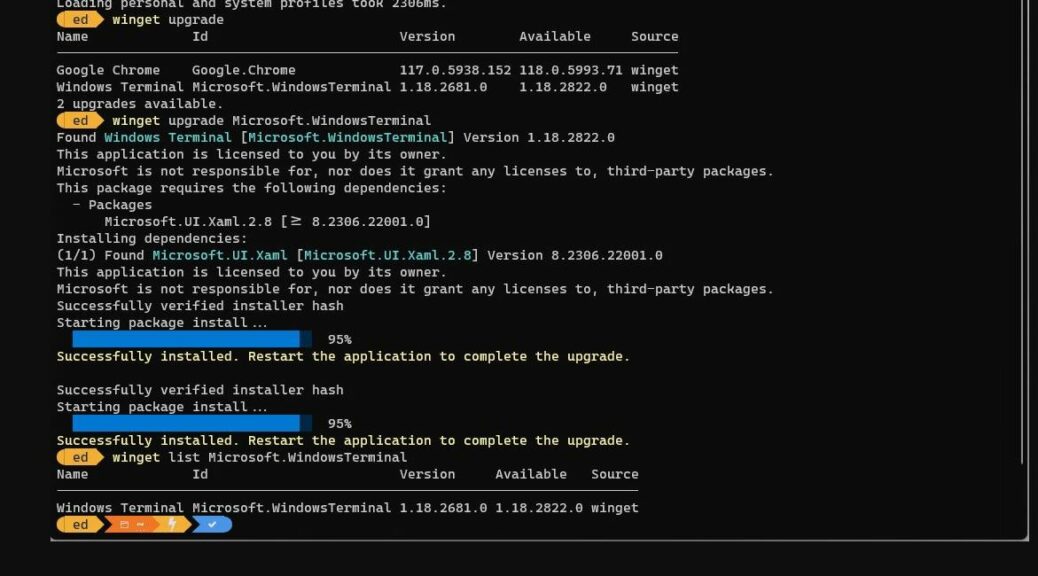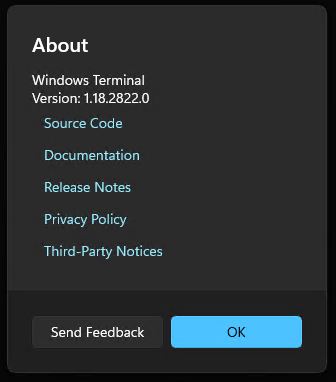In the wake of the latest Patch Tuesday, MS has released an update for Windows Terminal. As it works its way through the upgrade process it makes two identical warnings: “Restart the application to complete the upgrade.” If you look at the lead-in screencap, you can see that because I hadn’t yet closed, then re-opened WT it’s still showing the old version in the list sub-command at the bottom of the PS session. As I’ll explain, WT update requires application restart before the upgrade truly takes effect.
Why WT Update Requires Application Restart
Indeed, the WT update requires users to close all open WT windows and then open a new one. That’s so it can terminate the (old) running WT process(es). These are, of course, still running the 1.18.2681.0 version. When they’re all closed, the pointer switches to aim at version 1.18.2822.0 instead. Then, when you fire off a new WT instance, it’s running that new version, as you can see in the About info here:
After the open/close, the new WT version number pops up in About.
As I’ve explained in a number of recent blog posts here (see this September 28 item as an example), self-update activities can be tricky. The cleanest way to handle this kind of thing is to request users to kill the current running instance after installing a new one. That way, it makes a cleaner hand-off from old to new, and provides a “quiet moment” between when the old and new instances start running to handle the housekeeping involved (changing file pointers, registry entries, environment variables, and so forth).
Still Waiting On Winget to Follow Suit
I’d like to see the Windows Package Manager/App Installer tool known as winget follow Windows Terminal’s lead when it comes to updating itself. Indeed, winget upgrade Microsoft.Winget.
Source_8wekyb3d8bbwe does work. That said, it’s a Store app so mostly this gets handled automatically in the background during its daily update cycles.
But when winget updates itself, even though it succeeds it often ends in a status labeled “Cancelled.” That’s not really true, but it is a valid indicator of the kinds of tricky things that self-updates can do (and cause). I’d like to see it take the same approach as WT, hold itself in abeyance, and let users re-jigger the works to make the transition from old to new versions neat and clean. Is this a pipedream? I hope not!

